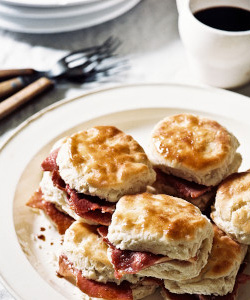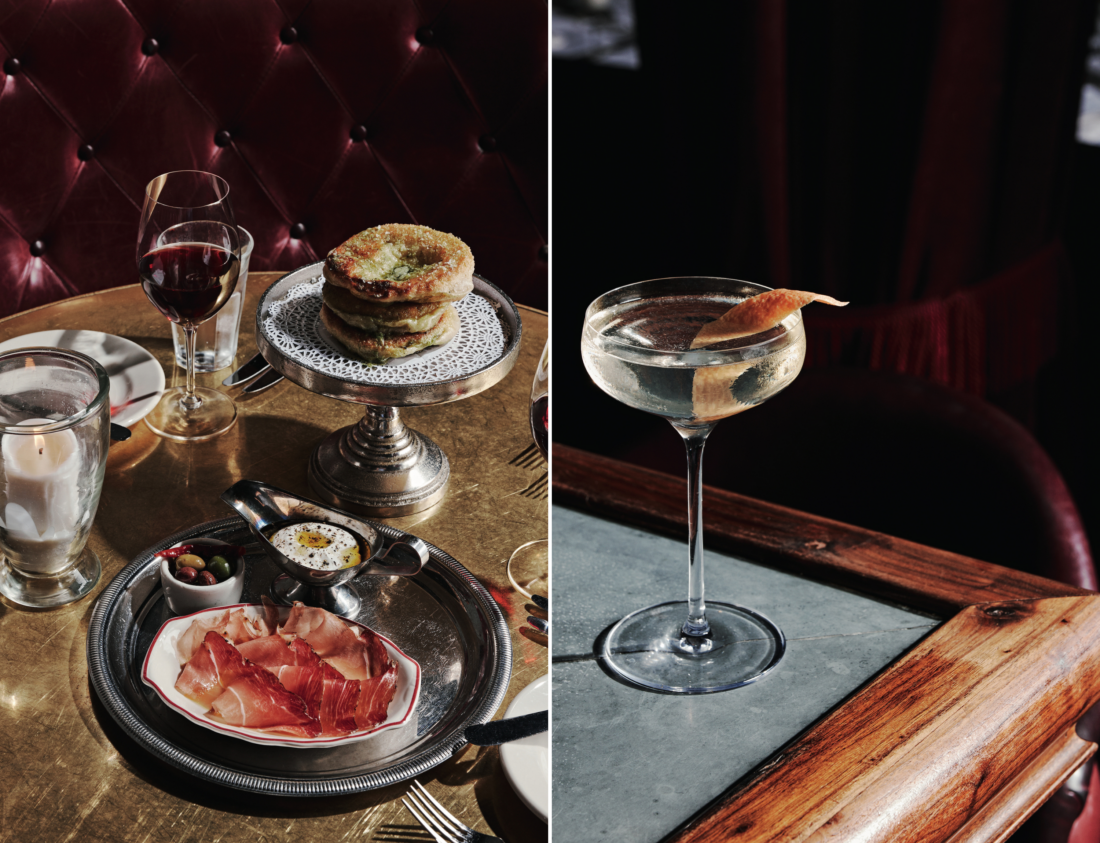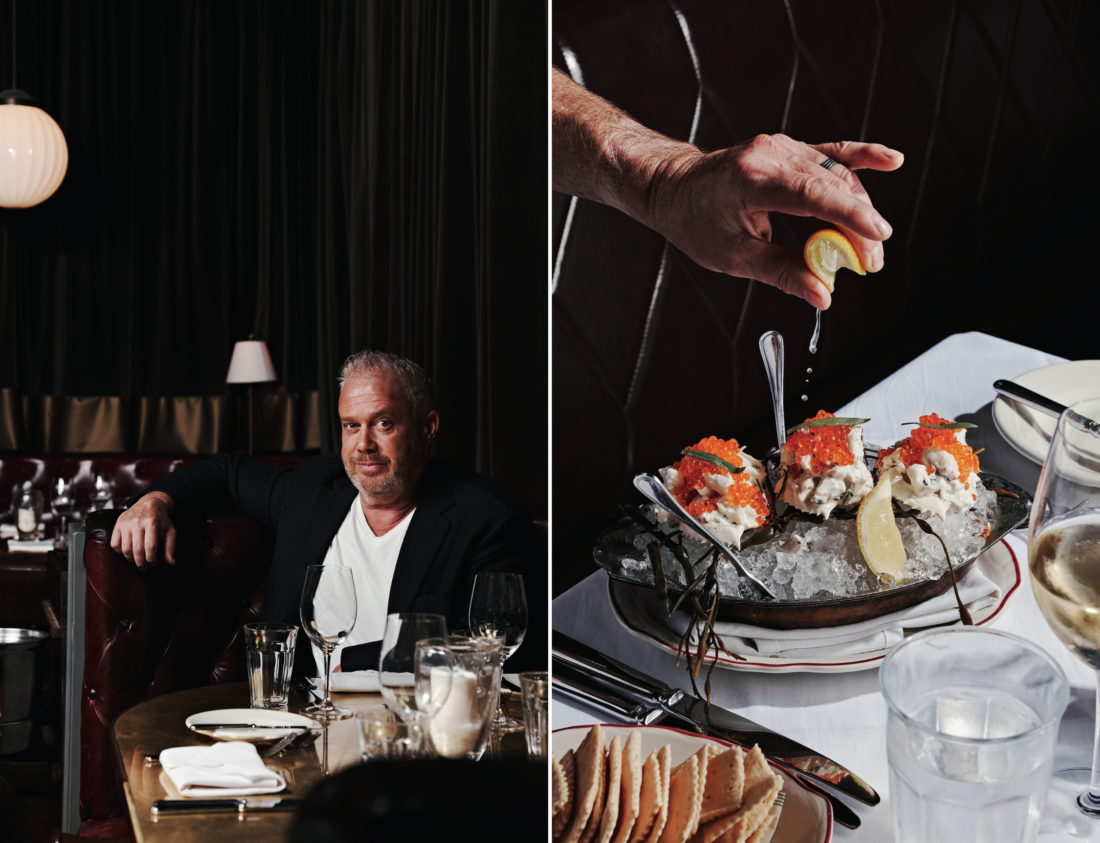Soon after a Man o’ War and a martini land on the pressed white tablecloth, my friend David leans over. “This place feels like a fancy cruise ship,” he says of the baroque Atlanta steak house Marcel, set on the grounds of a reimagined meatpacking complex on the western fringe of midtown. “Maybe a Monte Carlo casino,” I say, swiveling to take in the fantasy work: Tucked in an oxblood leather banquette, beneath the bust of a cow that looks like it got rustled from Les Halles, I see little to interrupt the French narrative. Velvet drapes block city lights. Fencing masks shade wall sconces.

Heavy on Edith Piaf, the soundtrack telegraphs Gallic cool. So do the Gauloise-patinaed photographs of the fabled French middleweight boxer Marcel Cerdan, Piaf’s boyfriend and the patron saint of this luxe restaurant. Our waiter, Xavier, wearing jeans and a tux jacket, gets it. “Tonight, we’re floating somewhere off the coast of France,” he says. “Welcome to 1935.”
Restaurateur Ford Fry made his rep with casual places that channel the id of Atlanta, including JCT Kitchen, a fried chicken bistro (now revamped into his brasserie Little Sparrow); the Optimist, a muscular seafood canteen; and Superica, the multi-location queso fundido and margarita joint. He now runs twenty-three restaurants in four states at price points worthy of Tuesday nights. But like a punk rocker trying to prove to fans he can record a hit love song, Fry wanted to try something different.

That meant going full-on continental, he says when we gather in the empty restaurant on a Sunday morning after my latest Saturday night at Marcel, the fourth in ten months. Fry reached for an era when a big night out meant a big hunk of prime beef, and the only cuisines that seemed to matter were French and maybe Italian. “This is a 1970s version of a 1930s restaurant,” he says. “I’ve always imagined it a place where some old French guy stands around back, a cigarette dangling out of his mouth.”
The look is as important as the larder, I realize over the course of my Marcel run. Mirrors bounce light across the room, beaming accidental cutaways of a long Grace Kelly neck, a short sequined skirt, a trim blue blazer, a strong Sidney Poitier jaw. Boxing gloves hang from the dining room wall like objets d’art borrowed from Duchamp. Pierre, a taxidermied fox, surveys all from atop a chifforobe next to the host stand.

This is a social restaurant. Eating at the zinc-topped bar, I meet a couple who arrive regularly at five to drink cocktails and split a double-stack burger. Waiting for a table another night, I talk with a young Georgia Tech graduate. Here to celebrate with his fiancée and mother, he tells me that the bread service at Marcel changed his life.
That bread service will at least change your idea about bread service. Like the French onion soup and salad that come with steak dinners at the much-lauded Bern’s Steak House in Tampa, the comp dishes at Marcel serve as acknowledgment that if you’re going to drop a few hundred dollars a head on dinner, the kitchen will splurge too. Shellacked with herb spread, a pleasantly chewy round arrives on a pedestal. Xavier describes the disk as pan-fried focaccia, but it tastes like one of those pancakes made by a dim sum house. Instead of butter, he presents a silver gravy boat of whipped ricotta. Ribbons of speck come alongside a small crock packed with olives and peppers.
The bread service is a test for David and me. Can we stay our hands, knowing that jumbo lump crab mayonnaise awaits, topped with pearls of smoked trout roe? One of Xavier’s colleagues debones a sole before our eyes, placing a crisped hat of skin atop pearly flesh. The thump of wooden spoon on wooden bowl carries across the dining room, and soon another waiter parades by with a Caesar, topped by fluffy white curls, a poodle of a salad just returned from the groomer.
You’ve been waiting for the steak, haven’t you? The crew here cooks prime cuts over oak and hickory, rests them for twenty minutes, and finishes each in a cast-iron pan, awash in foamed garlic butter. Dry-aged rib eyes top the hundred-dollar mark. Add sides and a cellared Bordeaux from a well-curated list, and your bill may outrun even the biggest appetite. There’s another way.
Skip the rib eye and sides. (The dauphinoise potatoes David and I shared were soupy.) Instead, order the entrecôte, a beautifully marbled rib eye cap, sliced in the kitchen and topped with an anchovy-forward salsa verde. Priced at a comparatively frugal fifty dollars, the French bistro classic comes with all that Marcel pomp, circumstance, and bread service. Most important, it also comes with fries, a seeming laundry basket’s worth, cooked twice and tossed in herbed salt.
Those potatoes tell a story, Fry tells me. “You can read a restaurant by its fries,” he says. You know whether the cooks care. No smile teases his lips. No recognition of the responsibility his family name confers.
“Good fries are the sign of a good bistro in Paris,” he says. “They’re the sign of a good restaurant anywhere.” Long splinters with cotton boll cores, begging for a quick plunge into a gravy boat of béarnaise or a drag through the mix of garlic butter and jus and green sauce that pools on the platters, Marcel’s fries make a compelling case for making this fancy cruise ship your Atlanta clubhouse.








